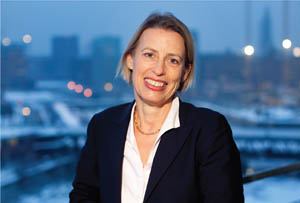A student of industrial designer Dieter Rams, Ulrike Brandi’s work is rooted in problem solving. Her first foray into lighting began with her thesis project, the lighting design for the entrance hall of a ballet school and theater. Without knowing lighting design and how it works, she designed a luminaire aided by information from Erco Lighting’s then technical director Harald Hofmann. After graduation she struck out on her own, determined to define lighting for herself. In turn, Brandi has made her mark on the public realm effortlessly, creating a dialogue with cities through lighting.
How does scale change the way you think about light?
I try to think about it in terms of light and shadow, daylight and electriclight, and daytime versus nighttime. I think about the shapes and sizes of buildings in an urban network and what space that leaves for light—especially daylight.
What is the greatest challenge for urban lighting?
Making it functional, but also creating an atmosphere where both pedestrians and vehicles feel comfortable and can co-exist.
How did your book Light for Cities come about?
I wanted to help our clients understand the design process and our working methodology, while figuring out a way to help them understand ther ole that lighting can play in adding value to a public space.
What impact are LEDs having on outdoor lighting?
They are definitely starting to be the source of choice for outdoor lighting applications. However, there is still a way to go when it comes tooptics and solving issues associated with glare and brightness.
Has your thinking about outdoor lighting changed over time?
Absolutely. Lighting isn’t just about one thing. I’m interested in figuring out how to bring aesthetic considerations together with environmental, behavioral, and cultural issues.
Is there something we are overlooking with so much of ourfocus being put toward LEDs?
Daylight. Maybe because we are surrounded by it, we forget about it,but using the light we have is the simplest way to save energy
